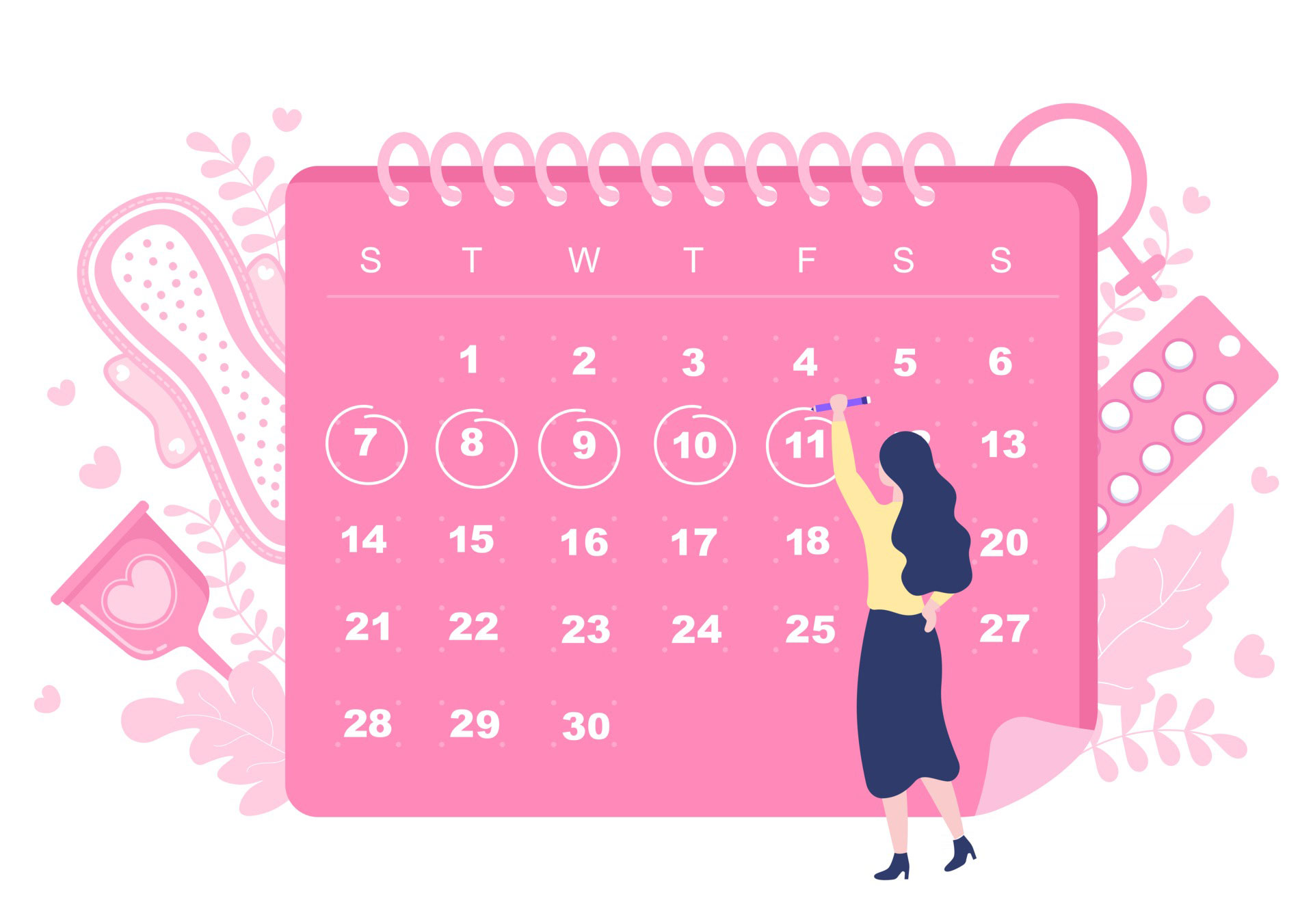
Using a Period Calculator
The last date of your menstrual cycle must be entered into the period calculator. The term "last date" refers to the beginning of the previous cycle, not its conclusion.
The average interval between your periods is the second input that the period calculator needs. It is best not to assume this number because it differs from person to person. This aids in precisely forecasting the next dates. And if you're hoping to expand your family, it's crucial that this number be as exact as possible because it will show you when you're most fertile.
The period calculator will share the result with you after you have entered these values. It gives you information about your most fertile days as well as the dates of your upcoming menstrual cycle. Please keep in mind that there are many variables that might affect a period, thus these calculations are not entirely correct.
P.S. If you conceive during the specified fertile days, it also offers an approximate due date for those of us who are inquisitive. Enjoy your planning!
P.S. If you conceive during the specified fertile days, it also offers an approximate due date for those of us who are inquisitive. Enjoy your planning!
Benefits of Period Calculator
A period calculator helps you in the following ways:
- It assists you in determining your fertile days, which is useful if you're thinking about expanding your family.
- It enables you to anticipate the dates of your period in the next months, enabling you to arrange the ideal picnic or vacation without having to fear that your period will ruin everything.
- It aids in keeping track of how frequently and regularly your menstrual cycles occur.
How to prevent Irregular Periods
What is an abnormal period ?
Although a menstrual cycle typically lasts 28 days, anything between 21 and 35 days is regarded as normal. In addition to the woman's physiology, menstrual periods are influenced by her lifestyle, diet, and other variables. Girls often begin having periods between the ages of 10 and 16; however, it might take them up to a year to develop regular cycles.
Menstrual problems signify irregular periods. Short or long duration, heavy or very light flow, spotting or bleeding before the menstrual cycle, missed periods, etc. are all possible concerns. Other period-related issues include weakness, low blood pressure, nausea, excruciating abdominal pain, fever, dysentery, menstrual cramps, hot flashes, and more.
A disorder known as amenorrhea causes a woman's period to totally stop. It is deemed abnormal if there is no menstrual period for 90 days. Typically, a woman's menstrual cycle ends when she is menopausal, pregnant, or lactating. Therefore, keeping track of your menstrual periods is crucial.
How can you make your period normal ?
Stress is one of the many factors that might lead to abnormal periods. Changes in habit, lifestyle, travel, and weight gain or loss are some of the major elements that have an impact on a woman's menstrual health. Fibroids, polycystic ovaries, pelvic inflammatory disorders, hormone abnormalities, etc. are a few additional causes.
The solution to irregular periods is to correct hormonal imbalances. Consuming healthy food all year long, not just during periods, will gradually begin to restore one's health and hormonal imbalance. Getting enough rest is another crucial element in addressing irregular periods. The body's capacity for rest and relaxation suffers the most in the fast-paced world of today. It is crucial to address this and avoid overextending oneself in order to restore one’s body balance.
Menstrual Cycles
A menstrual cycle typically lasts between 28 and 32 days. This fluctuates for a variety of reasons, which affects the ovulation cycle as well. Typically, a cycle looks like this:
Day 1
On the first day of blood flow, your cycle starts.
Days 2-14
The cervical mucus begins to thin as the ovarian follicles start to become active.
Day 14
Ovulation happens in the middle of the woman's cycle, however it can also happen between Days 11 and 21. The LH surge is brought on by an increase in oestrogen levels, which induces the follicle to ovulate and release an egg. To determine when you ovulate, it's critical to track your basal body temperature and LH surge.
Days 15-22
The follicle generates progesterone after the egg has been released, which thickens the uterine lining in preparation for implantation.
Days 23 to 24
An egg that has been fertilised may be implanted. A pregnancy test may now show signs of the hormones released during pregnancy.
Days 25 to 28
In the absence of pregnancy, hormone levels start to decline. Menstruation results from the uterine lining shedding.
Ovulating Days
On average, ovulation happens between 12 and 14 days before the start of the menstrual cycle. Make a note of the beginning day of two consecutive menstrual cycles to determine the average length of your period. The difference between the two dates is the average length of your cycle. Two weeks before the anticipated start of the next period, ovulation takes place. If you're trying to get pregnant, these are thought to be the most fertile days for a woman.
